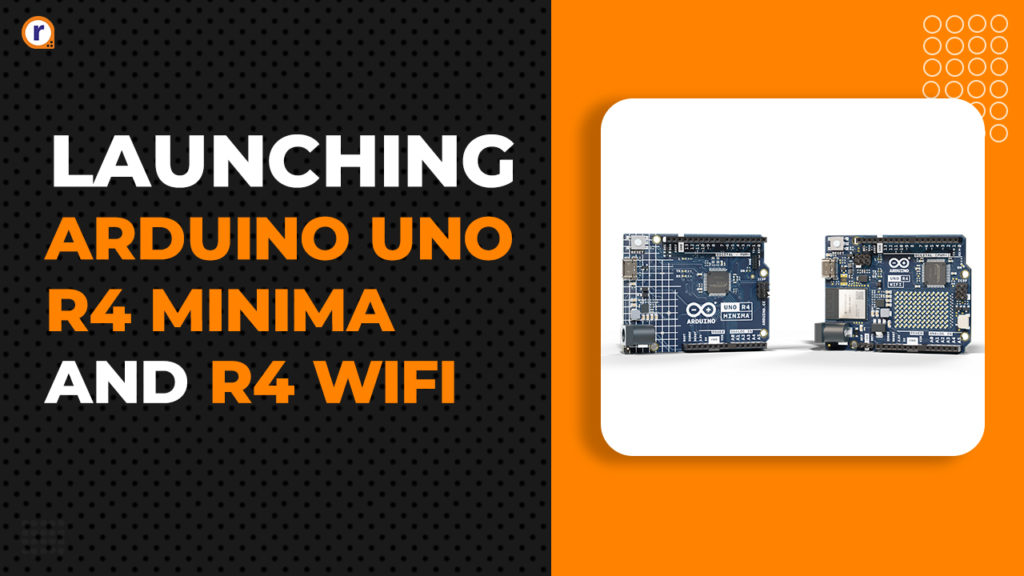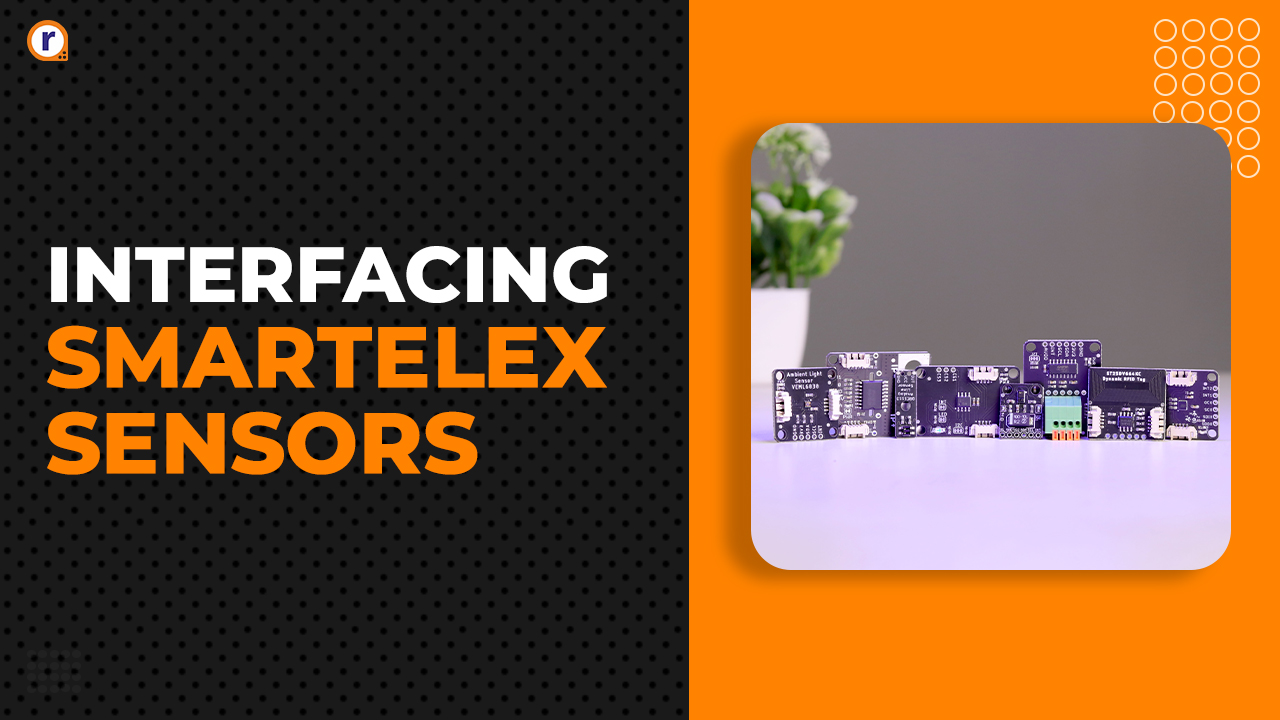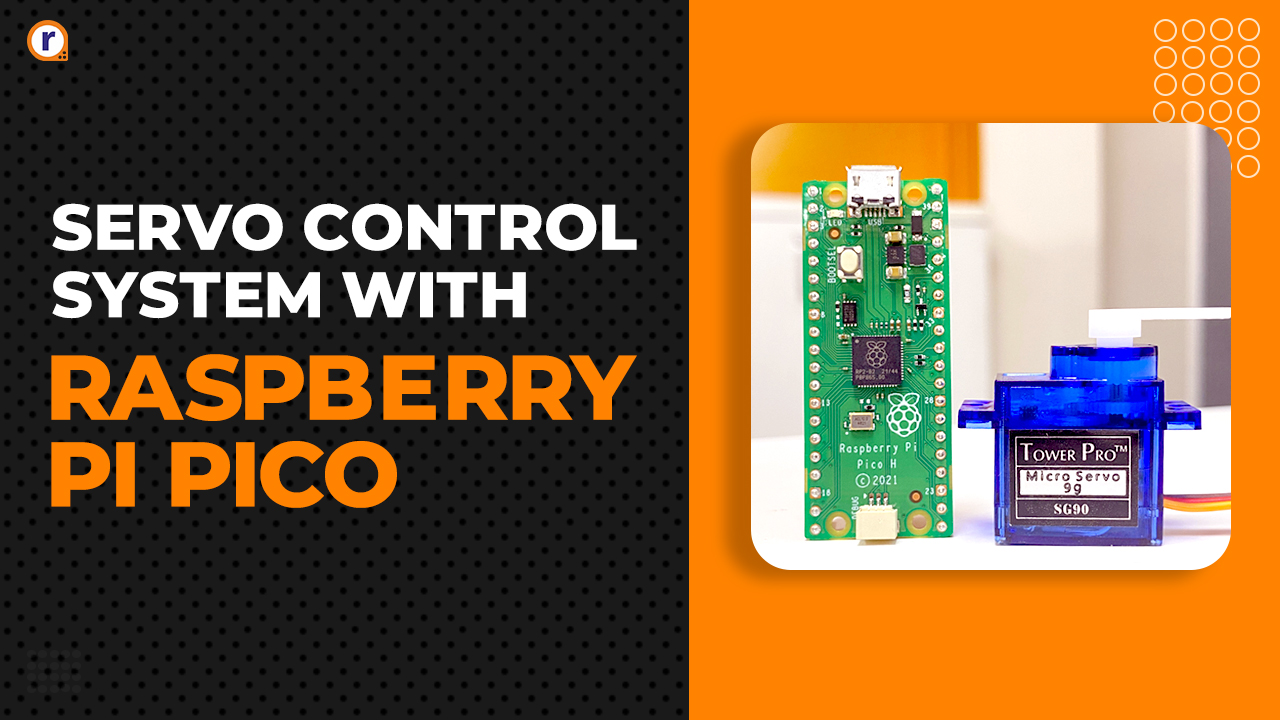Introducing Arduino Uno R4 Minima And Arduino Uno R4 WIFI: Empowering Makers, Revolutionizing Possibilities!
We are delighted to be introducing the latest Arduino marvels: the newly released Arduino Uno R4 Minima and Arduino Uno R4 WIFI, the upgraded versions of Arduino Uno R3.

We are delighted to be introducing the latest Arduino marvels: the newly released Arduino Uno R4 Minima and Arduino Uno R4 WIFI, the upgraded versions of Arduino Uno R3.
This revolutionizing addition to the Arduino category range raises the bar in the world of microcontrollers, allowing makers, inventors, and electronics enthusiasts to unleash their creativity like never before.
What is Arduino R4 Minima?
The enhanced and improved, Arduino UNO R4 Minima is the first UNO board to feature a 32-bit microcontroller. It features a RA4M1 series microcontroller from Renesas (R7FA4M1AB3CFM#AA0), which embeds a 48 MHz Arm® Cortex®-M4 microprocessor.
The memory on the UNO R4 is bigger than that of its predecessors. It features 256 kB of flash memory, 32 kB of SRAM, and 8 kB of data memory (EEPROM). The best news is that shields created for previous UNO iterations are therefore safe to use with this board, but are not guaranteed to be software-compatible due to the change in the microcontroller.
Let's brace for higher processing speeds, more memory, and a whole new level of on-board peripherals. The Arduino UNO R4 Minima is a reliable addition to the Arduino ecosystem, appropriate for both novices and experienced electronics hobbyists. Whether you're just getting started or looking to push the limits of your projects, this sturdy board gives an excellent performance every time.
What is Arduino Uno R4 Wifi?
The Arduino UNO R4 WiFi combines the processing power and exciting new peripherals of Renesas' RA4M1 microcontroller with the wireless networking power of Espressif's ESP32-S3 chip.
In addition, the UNO R4 WiFi features an onboard 12x8 LED matrix, QWIIC connector, VRTC pin for backup battery, and OFF pin, which covers all probable needs for the makers' next project.
With the UNO R4 WiFi, you can easily upgrade your project and add wireless connectivity to extend the range of your present setup. If this is your first endeavor, this board will inspire you.
Key features of the Arduino R4 Minima and Arduino Uno R4 WiFi.
- Hardware compatibility with the UNO form factor:
The compact dimensions, pinout, and 5V operating voltage of the UNO R4 Minima and UNO R4 WiFi remain the same as those of their predecessors, the UNO R3.
This provides a smooth transition for current shields and applications, leveraging the enormous and unique ecosystem that the Arduino UNO has already established.
- Expanded memory and a faster clock:
The UNO R4 Minima and UNO R4 WiFi have additional memory and a faster clock speed, which enable more accurate computations and the simple management of challenging projects.
- Extra onboard peripherals:
The UNO R4 Minima and UNO R4 WIFI feature a 12-bit DAC, CAN BUS, and an OP AMP as on-board peripherals. These extra components provide you with more possibilities and flexibility in your ideas.
- Extended 24 V tolerance:
The UNO R4 Minima and UNO R4 WIFI now support a broader input voltage range, allowing power sources of up to 24 V. This allows easy interfacing with motors, LED strips, and other actuators, simplifying your ideas by utilizing a single power supply.
- HID support:
The UNO R4 Minima and UNO R4 WIFI include built-in HID (Human Interface Device) capability, allowing them to emulate a mouse or keyboard when connected to a computer through a USB cable.
This handy feature makes it simple to communicate keystrokes and mouse movements to a computer, improving usability and functionality.
- Connector Compatibility:
Debugging is an essential element of every project. Arduino UNO R4 Minima includes a SWD connector. Simply connect an external debugger to the UNO R4 Minima to easily monitor your system's internal workings. It maintains control while gathering vital information.
The UNO R4 WIFI has a QWIIC I2C connector, which allows for simple connection to nodes in the wide QWIIC ecosystem. Adapter cables also enable compatibility with sensors and actuators based on other connectors.
- Wi-Fi® and Bluetooth®:
The UNO R4 WiFi has an ESP32-S3 module, allowing creators to integrate wireless connections into their projects. Makers can remotely monitor and manage their creations when combined with the Arduino IoT Cloud.
- Support for battery-powered RTC:
The UNO R4 WiFi has an "OFF" pin to turn off the board and a "VRTC" pin to keep the inbuilt Real-Time Clock powered and operating.
- LED matrix:
The UNO R4 WiFi includes a bright 12x8 red LED matrix, making it perfect for creative applications including animations or visualizing sensor data without the need for extra hardware.
- Diagnostics for runtime errors:
The UNO R4 WiFi features an error-catching system that identifies runtime crashes and gives thorough explanations and tips about the code line that caused the problem.
To understand more about these advanced boards, please refer to the below comparison table,
| Parameters | Arduino Uno R3 | Arduino Uno R4 Minima | Arduino Uno R4 WIFI |
| Microcontroller IC | ATmega328P- 8-bit AVR family microcontroller | Renesas RA4M1-R7FA4M1AB3CFM#AA0 (Arm® Cortex®-M4 with Floating Point Unit) | Renesas RA4M1-R7FA4M1AB3CFM#AA0 (Arm® Cortex®-M4 with Floating Point Unit) |
| Wireless connectivity (WIFI & Bluetooth) | No | No | ESP32-S3 |
| Input voltage | - Input voltage (nominal)-5V -Recommended input voltage (VIN) is 7-12 V - Barrel jack connected to VIN pin (7-12V | -The operating voltage for RA4M1 is 5 V - Recommended input voltage (VIN) is 6–24 V - Barrel jack connected to VIN pin (6-24 V) - Schottky diodes for overvoltage and reverse-polarity protection | -The operating voltage for RA4M1 is 5 V The Recommended input voltage (VIN) is 6–24 V -barrel jack connected to VIN pin (6-24 V) -Schottky diodes for overvoltage and reverse polarity protection |
| Clock Speed | 16MHZ | RA4M1-48MHZ | RA4M1-48MHZ ESP32-S3 -up to 240 MHz |
| USB Port | USB B - Programming Port | USB C- Programming Port / HID | USB C- Programming Port / HID |
| Output Current | 20mA per GPIO | 8mA per GPIO | 8mA per GPIO |
| Memory | - 32 kB Flash Memory - 2 kB SRAM - 1 kB Data Memory (EEPROM) | - 256 kB Flash Memory - 32 kB SRAM - 8 kB Data Memory (EEPROM) | For core - 256 kB Flash Memory - 32 kB SRAM - 8 kB Data Memory (EEPROM) For ESP32-S3 - 384 kB flash memory, 512 kB SRAM |
| Onboard Peripherals | 10-bit ADC | - Capacitive Touch Sensing Unit (CTSU) - USB 2.0 Full-Speed Module (USBFS) - up to 14-bit ADC - up to 12-bit DAC - Operational Amplifier (OPAMP) | - Capacitive Touch Sensing Unit (CTSU) - USB 2.0 Full-Speed Module (USBFS) - up to 14-bit ADC - up to 12-bit DAC - Operational Amplifier (OPAMP) |
| I/O Pins | - 14 Digital pins - 6 Analog input pins - 6 PWM pins | - 14 Digital pins - 6 Analog input pins - 6 PWM pins - SWD connector | - 14 Digital pins - 6 Analog - 6 PWM pins - VRTC & OFF pin |
| Communication Protocol | UART, SPI, I2C | UART, SPI, I2C, CAN (requires an external transceiver) | UART, SPI, I2C, CAN (requires an external transceiver) |
With all of these functionalities crammed into the well-known UNO form factor, now is the time to prepare to explore a new world of possibilities with the Arduino UNO R4 Minima and the Arduino UNO R4 WIFI provides unrivaled adaptability and possibilities for creators of all skill levels.








